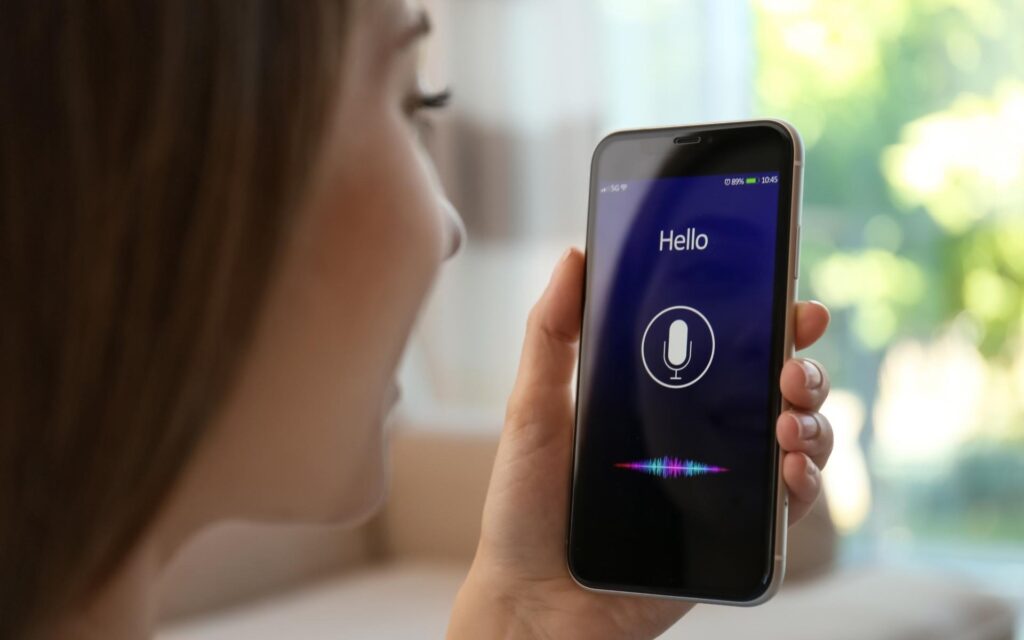Tips For Leveraging The Power Of Voice Search Optimization

Many people use voice search to search for information and purchase items. Here’s what you need to be aware of regarding voice SEO and how it affects UX.
Imagine two companies trying to get the same customers.
Let’s refer to them as Store A and Store B.
They’re the same except for one aspect The Store A location is a convenience of having an area that’s easy for seven of 10 customers to get to.
Which firm will do better business?

It doesn’t require an MBA to understand this Store A provides greater convenience and therefore captures more outstanding market shares.
Take a look at a convenience you could add to your site that can have the same impact and impact: voice search.
Based on Statista, the number of voice assistants is 8 billion digital voice devices available in 2024.
Many people are talking on their smartphones as well as smart speakers.
If you’re not optimizing the web content to accommodate it, you’re leaving plenty of possibilities on the table.
Why do such a large number of users use this feature? Why is it so important for SEO? More importantly, what are you claiming your part?
Check out this article for the responses to your questions and more.
How popular is Voice Search?
We’ve already identified how many people are using voice search functions on their phones. However, let’s examine some additional pertinent figures to determine the necessity of using this trend.
- In 2022 the percentage of Americans older than 18 have smart speakers (up from 32 percent in 2021.).
- Sixty-two percent of Americans over 18 years old use voice assistants on their devices.
- One of the main three reasons consumers would like a smart speaker is the ability to inquire without needing to type.
- Most owners of smart speakers are happier using them to find new events and content.
- Fifty-seven percent of users who use voice assistants use them at least once daily.
You can see that smart speakers and voice assistants are increasing in popularity in the race for search traffic and are expected to increase.
We haven’t discussed two key aspects yet: accessibility and UX (user experience).
Voice Search Enhances Accessibility
The US Department of Justice has clarified that websites are subject to the Americans with Disabilities Act (ADA).
In the event of non-compliance, it could cost you more than traffic tickets, and you could be fined up to $75,000 for the first offense.
Voice search plays an integral part in making sure that your site can be accessible to anyone.
This includes people with physical limitations that limit users from using the mouse or keyboard, those who have suffered chronic stress injuries that need to restrict their time with mice and keyboards, and those with cognitive impairments prefer using voice search.
A large portion of this feature is based on technology that recognizes speech. However, you might not be aware that the way your website’s code could also have a significant impact.
By the WAI (Web Accessibility Initiative) WAI recommends many guidelines your website should follow to ensure accessibility. These include the reading order under the code order, using alt tags for images, and incorporating markups to convey meaning and meaning.
Voice Search User Results For Users
The connection between good UX and better search results has been proven. The growth of voice searches means that making your UX around speaking is becoming more crucial.
How your company interacts with various voice search-enabled devices will significantly impact whether your customers have positive or negative experiences.
Before tackling this issue, knowing how people use voice search is essential.
One of the primary purposes is to provide information.
Imagine you’re knee-deep in pasta and tortellini as the red sauce simmers in an oven.
You don’t know how long the sauce was supposed to be cooking for, so instead of trying to clean and dry them, you shout to the smartphone, “Hey Google, how long do you think tomato sauce should cook?”
You’re out with a group of friends, and one of your friends cannot believe Willie Mays ever played for the Mets.
A quick search on your phone can assist you once more show your baseball expertise.
Apart from settling disputes, many people use it to look up weather and news.
Another widespread use could be “near me” searches.
For example, suppose you’re on an excursion in a country you’ve never even visited. Your vehicle is in the middle of a rage, and you’ll need to locate the nearest gas station as quickly as possible.
While never turning your attention off the road, a voice search can guide you to the most convenient location to fill your tank.
There’s also Voice shopping. It was mentioned earlier.
From making shopping lists, and ordering pizza to buy products using voice, increasing numbers of customers are making purchases without looking at a monitor.
The use of voice search is expanding along with its growing popularity.
That leads to the question: how can you get involved in this?
Prioritize Your Voice Search Efforts By Channel And Audience
When you are developing the voice SEO strategy, you need to be aware of the limitations and capabilities of the platform you’re creating for. There are two options here:
- Display-first gadgets like tablets, smartphones as well as smart TVs.
- Voice-first devices like smart speakers.
Each has distinct strengths.
Devices that are screen-first (when screens are used) provide a reliable output of information.
Visual scanning is quicker than listening and can help provide more information in a shorter time. According to the old saying, the image is worth 1,000 words.
On the other hand, voice-first devices offer an efficient input method.
Users can make commands fast and effortlessly in their way.
Naturally, this depends on the device’s understanding of natural spoken language, which has been vastly developed since the voice commands were still in their early days.
Based on your website’s content and your demographics of users, and many other aspects, your customers might be more likely to choose one device over another.
Also, you must know the exact stage of the buyer’s journey voice search is utilized.
Several people are using their voice assistants to search for products rather instead of purchasing them. With 44.4 percent of U.S. consumers using them to research new products, only 24.2 percent of them make use of them to make the purchase.
The majority of these purchases are minor things that don’t need to be examined, like toilet paper or dog food.
Consider all of these aspects into consideration, and then adapt your voice plan to your particular audience and channel.
Once you’ve finished that, now it’s time to get back to the details in optimizing the content you’ve created.
Optimizing Your Content For Voice Search
If you’re not familiar with the experience in the field of creating vocal user experiences (or VUI (verbal user interfaces), do not fret, this is a relatively new area.
Although they differ from GUIs (graphical user interfaces), The UX/UI principles remain the same, as does the user experience’s impact on your search rankings.
Here are few key things to think about when designing your VUI or converting your existing content to make it more optimized to be a voice-search engine:
Begin With A Strategy
Instead of tackling your VUI or voice search optimization on a piecemeal basis, you should be making a flowchart of how users who use voice search navigate your site.
Making a plan in-advance can save you a lot of stress, frustration, and work that is duplicated in the future.
Creates Natural Interaction
Voice searchers use natural language to locate things, typically employing more words.
When a person using a desktop search engine could type “Chinese delivery nearby” for delivery in the area], a person who is using voice search is more likely to type, “Where’s a good Chinese delivery location close to me?”
Long-tail keyword phrases used in regular SEO for purposes will also come into play regarding voice search.
Use full-length words and queries. These are more effective than long-tail keywords. Also, make sure you’re considering the intent of your users.
Design for Flow
We have previously discussed the importance of ensuring that your HTML, CSS, and other codes should be arranged exactly the way that a human would browse your website, so it can tell the same story when searching using voice.
It is also important to follow this approach sequentially to structure your content.
Make sure that the content follows a logic-based sequence.
Develop verbal labels easily navigated with a voice all by itself (e.g., “select option #2″). ”).
Enhance Your Domain Authority
Here’s how your regular SEO efforts could pay off in voice SEO.
Voice search is almost always the first result from a search to address a question.
Therefore, ensuring your site is fully optimized for search engines is essential.
Review your backlinks, increase the use of your keywords, improve the local search engine and complete the other things that are part of SEO and you will also pay dividends when it comes to voice search.
Featured excerpts aren’t just for desktop and mobile searches; they also provide queries using voice.
Get Snippets from the Featured Snippets
In reality, 60% of all answers to voice searches originate from featured snippets.
If your content uses this precious real estate to answer a question, you can be the main beneficiary of the voice-based traffic.
Find Local
Since many voice searchers are seeking local information, Your content must be optimized for this.
If you’re not there yet, it included in Google’s local listings.
Even if you’re there, strive to improve your performance.
The idea is to become the solution when someone uses Google to answer questions like [Where can I have an alteration to my dress near me? What can I do?
Voice Search is Only Going to Grow
Certain technologies are bright for a while, only to eventually fade completely. Do you remember the HD DVD?
Voice search isn’t likely to be one of them.
Instead, it’s looking for new applications and a larger market as technology advances.
The mouse and keyboard model we’ve come to know and love is more likely to be obsolete, mainly if Elon Musk’s futuristic Neuralink takes off.
The most crucial thing in this new sci-fi world is user experience.
It’s not too far-fetched to think of AI-powered search algorithms learning our interests and dislikes, then sharing us with customized solutions to meet our particular intention.
The best method to ensure that you’re ready for this exciting future is to use the most recent technologies to ensure that you’ve positioned yourself for the future by securing your position to the maximum extent feasible.
This means harnessing the potential that is voice-based search.
It’s the base on which the future of search is constructed, and it’s essential to get on board.
Your customers are talking to you. Make sure that your website is paying attention.

